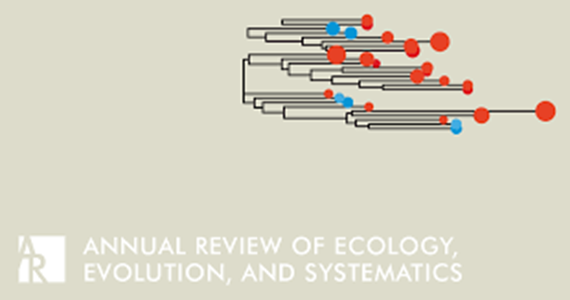新的干扰机制和生态响应
IF 11.2
1区 生物学
Q1 ECOLOGY
Annual Review of Ecology, Evolution, and Systematics
Pub Date : 2023-08-04
DOI:10.1146/annurev-ecolsys-110421-101120
引用次数: 1
摘要
许多自然干扰具有强烈的气候强迫作用,人们越来越关注生态系统将如何对它们不适应的干扰制度作出反应。新颖性可能出现在干扰状态的属性(例如,频率,严重程度,持续时间)超出其历史变化范围,或者作为历史上不存在的新干扰因子出现。生态系统能吸收多少新事物,以及变化的干扰制度是否会导致新的结果,取决于群落的生态反应,而群落的生态反应也会发生变化。存在强大的概念框架来预测新干扰制度的后果,但在现实世界中应用这些框架仍然具有挑战性。非线性关系(例如,引爆点,反馈)由于其不成比例的影响而受到特别关注。未来的研究应该量化干扰制度中新颖性的增加,并评估生态系统应对这些变化的能力。新的干扰机制将成为生态变化的有力催化剂。预计《生态、进化和分类学年度评论》第54卷的最终在线出版日期是2023年11月。修订后的估计数请参阅http://www.annualreviews.org/page/journal/pubdates。本文章由计算机程序翻译,如有差异,请以英文原文为准。
Novel Disturbance Regimes and Ecological Responses
Many natural disturbances have a strong climate forcing, and concern is rising about how ecosystems will respond to disturbance regimes to which they are not adapted. Novelty can arise either as attributes of the disturbance regime (e.g., frequency, severity, duration) shift beyond their historical ranges of variation or as new disturbance agents not present historically emerge. How much novelty ecological systems can absorb and whether changing disturbance regimes will lead to novel outcomes is determined by the ecological responses of communities, which are also subject to change. Powerful conceptual frameworks exist for anticipating consequences of novel disturbance regimes, but these remain challenging to apply in real-world settings. Nonlinear relationships (e.g., tipping points, feedbacks) are of particular concern because of their disproportionate effects. Future research should quantify the rise of novelty in disturbance regimes and assess the capacity of ecosystems to respond to these changes. Novel disturbance regimes will be potent catalysts for ecological change. Expected final online publication date for the Annual Review of Ecology, Evolution, and Systematics, Volume 54 is November 2023. Please see http://www.annualreviews.org/page/journal/pubdates for revised estimates.
求助全文
通过发布文献求助,成功后即可免费获取论文全文。
去求助
来源期刊
CiteScore
19.90
自引率
1.70%
发文量
21
期刊介绍:
The Annual Review of Ecology, Evolution, and Systematics is a scholarly publication that has been in circulation since 1970. It focuses on important advancements in the areas of ecology, evolutionary biology, and systematics, with relevance to all forms of life on Earth. The journal features essay reviews that encompass various topics such as phylogeny, speciation, molecular evolution, behavior, evolutionary physiology, population dynamics, ecosystem processes, and applications in invasion biology, conservation, and environmental management. Recently, the current volume of the journal transitioned from a subscription-based model to open access through the Annual Reviews' Subscribe to Open program. Consequently, all articles published in the current volume are now available under a CC BY license.

 求助内容:
求助内容: 应助结果提醒方式:
应助结果提醒方式:


